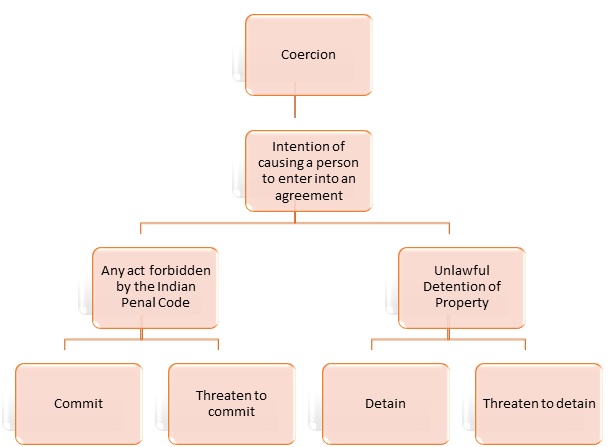A Primer on Sedition Law in India-Part 1
What is Sedition?
Sedition defined as “any words, either spoken or written, or any signs, or any visible representation, or otherwise, which brings or attempts to bring into hatred or contempt, or which excites or attempts to excite disaffection towards, the Government established by law in India” is a criminal offence under section 124-A of the Indian Penal Code, 1860.[1] This offence is majorly associated with public tranquillity and is considered as an offence against the state. The explanations to this section distinguish between disaffection and disapprobation and draw a clear line between which actions are considered to be sedition and which are not. Explanation no.1 clarifies that disaffection refers to any feelings of disloyalty or enmity and that any act done to excite disaffection towards the government shall constitute sedition. Explanation no.2 and 3 however elucidate that any action expressing disapprobation against the measures of the government or the administrative actions of the government with a view to seek modifications by lawful means does not constitute as sedition. Criticising the actions of the government to obtain positive changes lawfully is not considered as sedition. The word sedition is not an operative part of the section, it is just mentioned in the marginal note of the section to indicate by which name the crime defined in the section will be known.
A Brief History of Sedition Law in India
Sedition Law in India was originally introduced
by Lord Macaulay in 1837 as section 113 of the Draft of the Indian Penal Code
which now corresponds to section 124A of the Indian Penal Code.[2] However, it was omitted in
the actual act when it was passed in 1860. It was contended by Sir James
Stephan, the then Law Member in the Viceroy's Council that the omission of
section 113 in the original Penal Code was a mistake and he was then set to
rectify this mistake of the drafting committee as he introduced section 124A in
the Indian Penal Code in 1870, in light of the threats of Wahabi activities which
aimed to overthrow the British Rule and stifle the public voice in India
against the state.[3]
The sedition law in India was quite different from the original sedition law in
England. In England, sedition was almost dormant as it was categorized as only
a misdemeanour and it was a bailable offence with a punishment of a mere two
years.[4] The Indian equivalence of
this law was a serious non-bailable offence with imprisonment for life as its
punishment.[5]
The Indian law was also more constricted and precise as compared to the broad
and vague common law.[6]
Pre-Constitution Judicial Decisions
Queen Empress v. Jogendra Chandra Bose[7]
This case, also commonly referred to as
the Bangobasi Case, was the earliest case under section 124A after almost 21
years of its insertion in the Indian Penal Code. Jogendra Bose, a publisher of a
local journal was booked for sedition for an article that criticised the Age of
Consent Bill and the negative economic impact of British colonialism allegedly
arousing ‘disaffection’ against the colonial state. The court drew a line of
difference between the common law and Indian law stating that Indian law is
mild compared to the common law of sedition as the common law penalizes any
overt act against the government whereas under the
Indian Law, only those acts which ̳are done with “the intention to resist by
force or an attempt to excite resistance by force” are categorized as sedition.
The controversy between the two words
‘disaffection’ and ‘disapprobation’, which forms the core of section 124A
was discussed in this case. The court opined that disaffection which is defined
as a feeling contrary to affection, like dislike or hatred should be judged as
sedition under this section, but disapprobation which is merely disapproval of
the government’s actions is not sedition. No final decision was given as the
jury could not reach a common unanimous decision and the case was taken back as Jogendra issued an apology.
Queen Empress v. Bal Gangadhar Tilak[8]
In this case, the defendant, Bal Gangadhar
Tilak was accused of sedition for publishing an article in his journal Kesari
titled Shivaji’s Utterances, referring to him to incite the people to overthrow
the British Rule. This case widened the horizon of the offence of sedition. Justice
Arthur Strachey observed that 'excite or attempt to excite mutiny or rebellion,
or any sort of actual disturbance' i.e. the incitement for violence is not
necessarily the only ingredient of sedition as conceived by Lord Macaulay. In this
case, the jury deeply deliberated over how to interpret disaffection and it concluded
that it consisted of feelings of enmity, hatred, dislike, hostility, contempt,
disloyalty, and any other ill-feeling towards the government. This case led to
the 1989 amendment, which included disloyalty and feelings of enmity to explanation
no.1 which described disaffection.
Queen Empress v. Ramchandra Narayan[9] & Queen Empress v. Amba Prasad[10]
These two cases pursuant to the Tilak
judgment followed through what started in it literally interpreting section 124.
The definition of Sedition was amplified penalizing exciting or attempt to
exciting certain feelings as well.
Niharendu Dutt Majumdar v. King Emperor[11]
The verdict, in this case, brought a major
change in the law of the sedition in India. Niharendu Dutt Majumdar, a member
of the Bengal legislature, rebuked the Bengal Government for not being
successful in preventing the communal riots in Dacca in 1941. He was found
guilty for sedition by the trial court as well as the High Court. In the appeal,
Chief Justice Maurice Gwyer of the Federal Court applied the English law test
of direct incitement to the law of sedition digressing from the literal interpretation
of the law overruling the High Court judgment. He opined that the offence was
linked to disruption of public order and until and unless the speech/action
disrupts or attempts to disrupt public order, it cannot be held actionable. He held that plain criticism of a government or even asserting the want of a different government was not actionable under the law of sedition and that
not all unpleasant words can be regarded as seditious. Consequently, Majumdar
was acquitted.
King Emperor v. Sadashiv Bhalerao[12]
The Majumdar judgment was overruled in
this case which was heard by the Privy Council. The Privy Council upheld the decisions
in the case of Bal Gangadhar Tilak, Ramchandra Narayan, and Amba Prasad of
literally interpreting section 124A and opined that Majumdar judgment was based
on a wrongful construction of section 124A.
Constitutional Debates[13]
The Right to Freedom of Speech and Expression
was initially included in Article 13 of the Draft Constitution which guaranteed
this right to the people barring certain restrictions. A proposal was made to
include sedition and libel in these restrictions of the freedom of speech and
expression. However, this proposal was strongly opposed by the drafters as such
provisions were labelled as a shadow of the colonial times that should not see
the light of free India. The final drafters had a clear consensus between them about
the overbearing nature of sedition law and thus they rejected this proposal.
Post Constitutional Rulings
Romesh Thapar v. State of Madras[14], Tara Singh Gopi Chand v. The State[15] & Ram Nandan v. The State of Uttar Pradesh[16]
These three decisions struck down section
124A as unconstitutional. In these cases, the court held section 124A as unconstitutional
since it was ultra vires of the constitution as it contravened the right of
freedom of speech and expression of the citizens. The Romesh Thapar judgment
led to an amendment in article 19(2) adding two phrases- ‘friendly relations
with foreign state’ and ‘public disorder’ as restrictions to the freedom of
speech and expression. While deciding the case of Ram Nandan, the court quoted
Jawaharlal Nehru who while introducing the first amendment bill to the
constitution said, “Now so far as I am concerned that particular Section is highly
objectionable and obnoxious and it should have no place both for practical and
historical reasons, if you like, in any body of laws that we might pass. The
sooner we get rid of it the better.” indicating that even the government wanted
to get rid of this outrageous law.
Kedar Nath Singh v. State of Bihar[17]
The constitutional validity of section
124A was challenged before the Supreme Court in this case. The previous
judgments of Tara Singh and Ram Nandan were overruled by the supreme court in
this case in 1962 as the court upheld the constitutionality of section 124A and
discerned between disloyalty to the government and remarking about the actions
of the Government without inducing public disorder through acts of violence.
The court’s rationale behind the decision was that the expression “Government
established by law” is considered as the discernible representation of the state which
is a necessary condition for the stability of the State and if it is undermined then the subsistence of the state would be at risk. The court held that the
subversion of the government is an offence but the criticism of its actions is
not. The court justified the validity of the offence by striking a balance
between the democratic right of the citizens and the power of the legislature
to impose reasonable restrictions. The Constitutional bench thus ruled in the
favour of the constitutional validity of the section but added an important
caveat: a person could be prosecuted for sedition only if his actions incite or
attempt to incite violence. The original distinction between disaffection and
disapprobation intended by Lord Macauly and Justice Gwyer in the Majumdar Case
was restored in this case.
Balwant Singh and others v. State of Punjab[18]
In this case, the appellants had shouted
slogans on the day former Prime Minister Indira Gandhi was assassinated, “Khalistan
Zindabad, Raj karega Khalsa, Hinduan nun Punjab chon kadh ke chadange, Hun mauka
aaya hai Raj kayam karan Da.” The Supreme Court opined that casually raising slogans for a couple of times without the intention of inducing public disorder by employing violence does not constitute a threat to the Government
of India. It was also held by the court that demands of apostasy and even formation of a separate state also would not be regarded as a seditious act.
Javed Habib v. State of Delhi[19]
In this case, the court held that having a strong opinion against the Prime Minister or his actions or criticising the actions of government or concluding that the leader is hostile towards a certain community from his speeches and actions cannot be regarded
as sedition under Section 124A of the IPC. "The criticism of the government is
the hallmark of democracy".
Sanskar Marathe v. State of Maharashtra[20]
Aseem Trivedi, a political cartoonist, and social activist was charged under section 124A of IPC for defaming the Parliament, the Constitution of India, and the National Emblem and attempting to spread hate towards the government through his cartoons. The court dismissed the matter after the state assured it that the state would issue a circular containing guidelines for police personnel across the state to ensure the evaluation of alleged seditious acts is done properly. Before parting with the case, the court differentiated between strong criticism and disloyalty. It held that disloyalty to the government is different from commenting in strong terms upon the actions of Government, or its agencies, to improve the situation of the people or to guarantee the correction of those actions by legitimate methods, not exciting those feelings of disaffection which entail public disorder or the use of violence.
Conclusion
Sedition law in pre-constitution India was strictly aimed at oppressing the citizens not allowing them their right to freedom of speech and expression and suppressing their actions so that they don't become a threat to the British Government and their authority is intact. Post-Independence, the courts have tried to strike a balance between the fundamental right of the citizens to freedom of speech and expression and certain restrictions like the security of the state and public disorder. The interpretation of sedition is limited to only those acts which incite violence to attempt to incite violence. The intent of not invalidating this section has time and again been defined by the courts and attempts have been made to make sure that no misuse of this section is done by the political authorities to fulfil their political ideologies by setting guidelines in different cases. However, these attempts have been fruitless as this offence is still being misused by the authorities to accomplish their agenda.
Private Member Bills
have been introduced in the Rajya Sabha and Lok Sabha by D. Raja [21]and Shashi Tharoor[22] respectively to prevent
this misuse of the section. While D. Raja proposed that section 124A should be
omitted Shashi Tharoor suggested an amendment in the current law, that the
section should lay down exactly what was interpreted by the Apex Court in the
Kedar Nath Judgment i.e. sedition consists of the acts which incite or attempt
to incite violence. But both the bills were rejected by the parliament.
England from where the law of sedition was
borrowed has repealed this law prioritizing the freedom of speech and
expression of the students.[23] We do not suggest that the
law should be repealed but it should at least be amended as the essence of the
section has remained the same as it was before independence. The environment in
which the law was enacted and the objective with which the law was enacted have
both changed after independence and thus it is extremely important that the sedition law is amended as suggested by Shashi Tharoor so that it can adapt to the
current situation and its misuse by political leaders can be prevented.
By,
LawVastutah.
[1]
Indian Penal Code, No. 45, Section 124A
[2]
Arvind Ganachari, Nationalism and Social Reform in a Colonial Situation
(Kalpaz,
2005).
[3]
Id.
[4]
Address by Justice Deepak Gupta, Judge, Supreme Court, available at: https://drive.google.com/file/d/1h6am8RUqIrBcBCSSzOshCLRCZcqdr-Bp/view.
[5]
Id.
[6]
Id.
[7]
(1892) 19 ILR Cal 35.
[8]
ILR (1898) 22 Bom 112.
[9]
ILR (1898) 22 Bom 152.
[10]
ILR (1897) 20 All 55.
[11]
AIR 1942 FC 22.
[12]
AIR 1947 PC 84.
[13]
Constituent Assembly of India, 2nd December 1948; Constituent Assembly Debates
Official Report, Vol.VII, Reprinted by Lok Sabha Secretariat, New Delhi, Sixth
Reprint 2014; See also Constitutional Assembly Debates, December 7,
1948, speech by S.H. Singh 16, available at http://164.100.47.132/LssNew/constituent/vol7p21.pdf.
[14]
AIR 1950 SC 124.
[15]
AIR 1951 Punj. 27.
[16]
AIR 1959 All 101.
[17]
AIR 1962 SC 955.
[18]
AIR 1995 SC 1785.
[19]
(2007) 96 DRJ 693.
[20]
2015 Cri LJ 3561.
[21]
Mahtab Alam, Book review chronicling the misuse of sedition law in India, THE
WIRE, https://thewire.in/law/book-review-chronicling-the-misuse-of-sedition-law-in-india.
[22]
The Indian Penal Code (Amendment) Bill, 2015, available at:
http://164.100.47.4/BillsTexts/LSBillTexts/Asintroduced/2535LS.pdf.
[23]
Press Gazzette, Criminal libel and sedition offences abolished, January 13,
2010, available at http://www.pressgazette.co.uk/node/44884 (Last visited on
March 15, 2014).





Nicely written. Sedition law is a very delicate subject. But this article explains the subject balancing all the notions. Great work Lawvastutah 👍
ReplyDeleteThank you! We are glad you liked it! Do follow our social media handles for regular updates!
DeleteThank you!
ReplyDelete